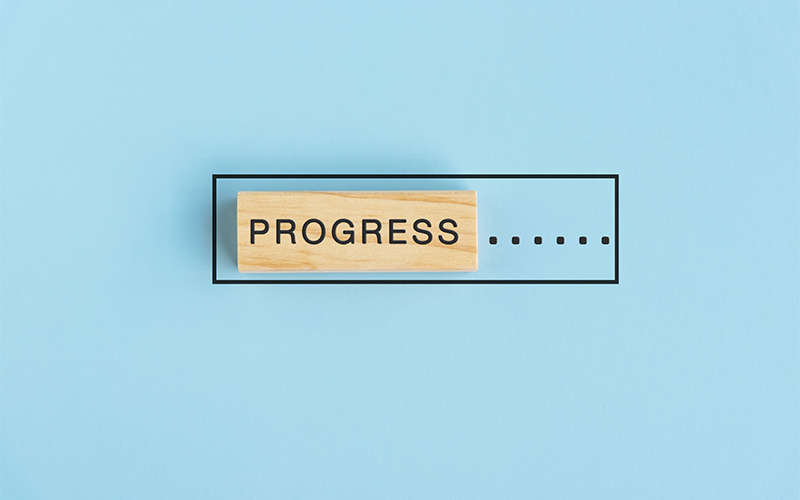Digital Interactive Services
How website design and content can kickstart your brand promotions
It goes without saying that having a website presence is bare essentials for any brand or company worth its dime. In 2022, no one can debate whether they need to have a website or not. The conversation now has rather shifted to how websites can deliver more. With conversion rates of up to 5% for websites, higher in case of certain industries, marketing managers are convinced to find new ways to take these numbers higher, primarily by leveraging the two most important aspects of a great website – content marketing for brand awareness and design.
You can’t hold one over the other. Both content and design aspects go hand in hand to make sure that your website is ranking high on credibility, and ensuring that your customers are engaged, while providing certain competitive advantages.
Enhancing Authenticity with Effective Website Content Strategies
Apart from being an important source of maintaining credibility, equivalent to having a physical address for your business, websites are a brand’s playground and platform to show off. One where a brand or a company can show itself in its natural colors, speak in the voice it has intended to, and embody every bit of the brand personality that it was envisioned for. Websites give customers a good sense of the company and often are the first touchpoint for them to establish trust.
Credible, relevant, and engaging content on website pages ensure better organic ranking on search engines. If you focus on the right keywords as per your brand, product, and industry, chances are that you will not need to spend too much on paid campaigns in the future. Implementing effective website content strategies, quality content not only secures higher visibility in search results within your domain but also helps you stand out from the competition. Design that compliments this content will simply ensure users like what they see and make them stick around longer.
Self-serve for customers
Aesthetic and content-rich websites will host a plethora of information regarding the products/services you’re selling, a luxury that is not available to brands through other marketing channels due to platform limitations or user consumption habits.
Customers usually land on a company’s website to get more details about the product/service they are interested in, or simply to reaffirm information garnered through a different source, following the mantra that “if it’s on the company’s website, then it must be accurate!”.
Hence, websites can also potentially be looked at as a self-serve platform for your customers to find the information they are looking for, even before reaching out to your customer support teams.
Now that we have established how important content and design are to your company’s website, let’s look at some essentials to nudge a brand towards an effective website marketing strategy.
With increasingly shortened user attention spans, first impressions have become a gamechanger in today’s digital world. The first thing that a customer landing on your website is likely to see is your brand’s colours, visuals, and overall presentation of brand aesthetics. In more brash terms, this is the point of judgement! Most customers will just judge your brand at first glance based on your website design and then make up their minds on whether they want to be associated with you. Therefore, aesthetics play a key role in establishing a connection with the customers and should be looked into with a fine-tooth comb.
Now that the first stage of superficial association has been passed, the next priority for the customers would be to find relevant content on the brand. This may be about finding more details on the company, the product/service, contact information, or simply understanding the brand’s tone and personality better. It’s one thing to have all the information that they are looking for put up in front of them, and another to guarantee that this content is presented concisely. This is where smart design comes into play.
Optimizing Accessibility for Content Marketing and Brand Awareness
Websites need to be made accessible and easy to navigate keeping in mind all kinds of users. This means that you will need to account for people who might be differently-abled, or even those who might have difficulty with certain colours, font, or size, or may require subtitles on videos. This applies to both content, as well as design, and there are certain web standards that sites are required to adhere to. These might even be mandatory and legally obligatory for certain industries and regions. Navigation is an important part of this, and you need to ensure at the design stage that users can seamlessly and easily navigate from one section to another.
It is now more important than ever to not only invest in a good website but also look at continuously optimizing it to grow into a formidable marketing channel. There are several design aspects that marketers can use to improve the ease of access of the website for the users, and a few stand out as outright necessary in today’s world:
- Legible text style and size,
- Using universal colour and contrast ratios,
- Embedding subtitles on video content,
- Audio transcripts for text, and so on.
A brand needs beauty (design) with substance (content) for its website to perform better and achieve desired results. Making sure that you work with the right partner who understands these aspects of content and design goes a long way towards marrying them into your business or marketing objectives. The right partner is someone who understands content, design, brand, marketing, and business, as it is very important in today’s context to check off on all these at different stages of the journey for a rewarding experience for all stakeholders.






